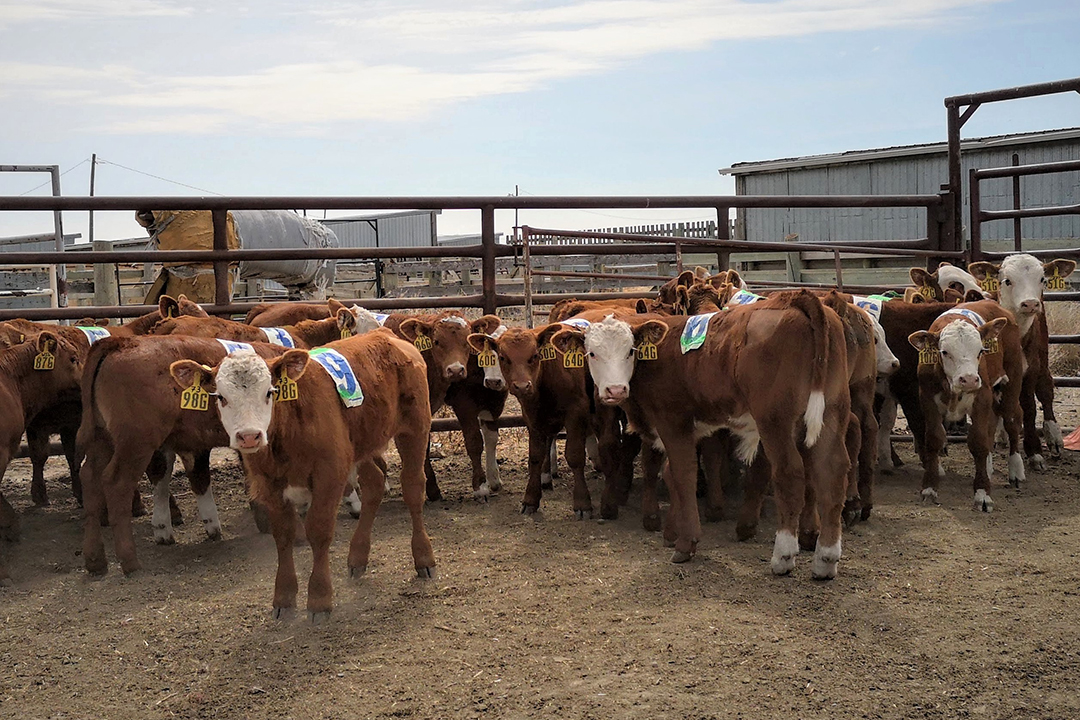
New drug protocol may reduce pain during castration
A Western College of Veterinary Medicine (WCVM) researcher and his team are looking into new options for pain management during castration of beef calves.
By Amanda LoeffenWCVM assistant professor Dr. Diego Moya is investigating whether lidocaine, a drug routinely used for freezing parts of the body before an invasive procedure (like the drug that dentists use in humans), can be efficiently used to reduce the acute pain that calves experience during castration.
Lidocaine, which works by blocking the nerves and numbing the area where it has been administered, has already been proven to minimize pain during castration. However, it’s not commonly used in the cattle industry because of the wait time involved in its use.
“Usually, it’s recommended to give lidocaine 30 minutes before the painful procedure happens,” explains Moya, whose research focuses on bovine behaviour and welfare at the veterinary college. “But in procedures other than castration — for example, during dehorning — lidocaine is typically used right before the procedure.
“We thought that if that pain mitigation approach works with dehorning, why wouldn’t it work during castration?”
Moya points out that people who go to the dentist don’t have to wait 30 minutes in the chair for the local anesthetic to work before a dental procedure begins.
Castration is recognized as a painful procedure in the beef industry, and it’s expected that more pain mitigation for calves will be required in the future. That’s reflected in a recent change to Canada’s Code for the Care and Handling of Beef Cattle. Since 2018, the code states that producers are required to use pain mitigation when calves over six months old are castrated.
Above: Researchers used drone footage to assess the mobility of calves after being castrated with two different pain mitigation protocols. Supplied video.
“Producers are becoming more sensitive to this topic,” says Moya. “There are more and more farmers who are concerned and willing to apply any tools that they have to prevent animals to be in pain.”
In Moya’s experience, producers quickly recognize the benefits of pain control once they use meloxicam, a non-steroidal anti-inflammatory drug (NSAID). While there are several options for pain mitigation, meloxicam (also known by the brand name Metacam) is the drug that’s most commonly used and most proven to be effective.
However, meloxicam is still not 100 per cent effective for pain control in any given scenario— and that’s where lidocaine enters the picture. Moya is optimistic that the combined use of lidocaine and meloxicam will further reduce the signs of pain in calves during castration, thus improving the welfare of Canadian beef calves.
“If we prove that lidocaine is effective at preventing pain by giving it just before castration, then it would likely be more broadly used by the industry to further prevent pain along with meloxicam and to improve the welfare of calves,” says Moya, whose research work is being conducted with beef cattle based at the university’s new Livestock and Forage Centre of Excellence (LFCE).
While improving the early-life welfare of calves has many implications — including a more positive public perception of the cattle industry — Moya explains that it’s also important for eliminating the negative long-term effects of pain and stress.
“Stress and pain can impair immune function and can also have a long-lasting impact on how animals perceive future challenges, so keeping animals at low stress levels could potentially have an impact on the use of drugs and antimicrobials.”
Amanda Loeffen of Prince Albert, Sask., is a fourth-year student in the USask College of Agriculture and Bioresources' Bachelor of Science in Animal Bioscience program. In 2019, she worked as a USask undergraduate summer research assistant (USRA) with Dr. Diego Moya of the WCVM. Her story is part of a series of articles written by WCVM summer research students.

